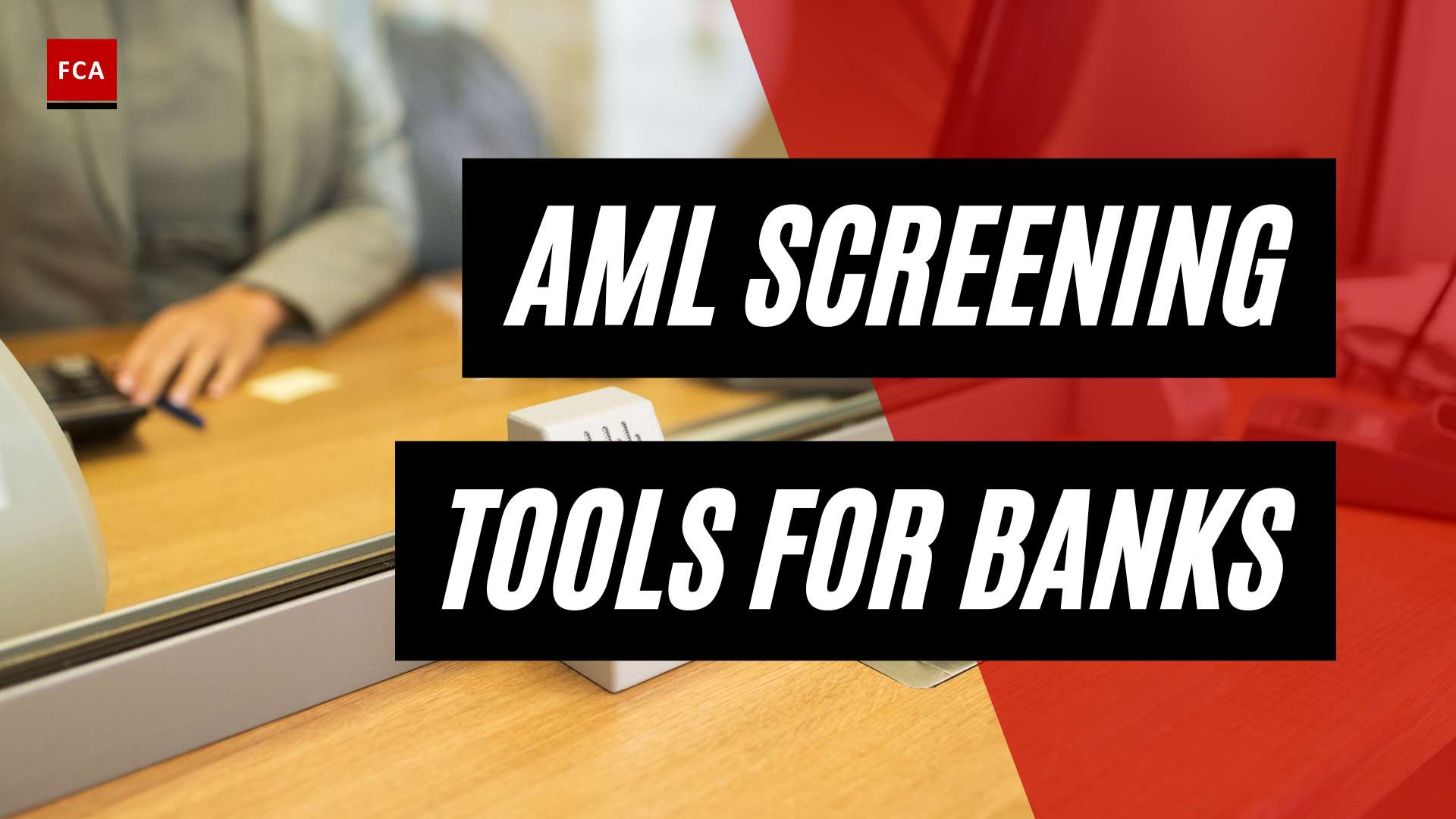The Role of Blockchain in AML
In the fight against money laundering and other illicit financial activities, the role of blockchain technology is gaining prominence. Blockchain technology offers unique features that can enhance Anti-Money Laundering (AML) efforts by providing increased transparency, improved traceability, and enhanced data security. This section will provide an introduction to AML and its challenges, as well as an understanding of blockchain technology and its potential applications in AML.
Introduction to AML and its Challenges
Anti-Money Laundering (AML) refers to the set of laws, regulations, and procedures designed to prevent the illegal acquisition of funds through various financial activities. Money laundering poses a significant threat to the integrity of the global financial system, as it enables criminals to disguise the origins of illicit funds, making them appear legitimate.
Financial institutions and other regulated entities face numerous challenges in combating money laundering. These challenges include the increasing complexity of financial transactions, the use of sophisticated techniques by money launderers, and the evolving regulatory landscape. According to NorthRow, blockchain technology can contribute positively to addressing these challenges by ensuring secure, transparent, and immutable transactions, significantly reducing the risk of money laundering activities.
Understanding Blockchain Technology
Blockchain technology is a decentralized, distributed ledger system that records transactions across multiple computers, creating a chain of blocks. Each block contains a timestamped and encrypted record of transactions, forming an unchangeable and transparent history of all the transactions that have ever occurred on the blockchain.
The key features of blockchain technology that make it suitable for AML applications are:
-
Transparency: Blockchain provides transparency by allowing all participants in the network to have access to the same information. This transparency is crucial for AML compliance, as it enables regulators to track and monitor transactions more effectively, enhancing the detection and prevention of fraudulent activities (NorthRow).
-
Traceability: Blockchain enables the traceability of transactions through its immutable nature. Once a transaction is recorded on the blockchain, it cannot be altered or deleted. This feature helps in establishing a reliable audit trail for AML purposes, facilitating the identification and investigation of suspicious transactions (Youverify).
-
Data Security: Blockchain technology ensures the security of data by utilizing cryptographic techniques. The decentralized nature of blockchain makes it highly resistant to tampering and fraud. This aspect is particularly valuable in AML, as it helps prevent money launderers from concealing their trails.
By leveraging these features, blockchain technology has the potential to revolutionize AML by offering increased efficiency, reduced costs, and improved compliance processes. In the following sections, we will explore the specific benefits and applications of blockchain in AML, including transaction monitoring and detection, automated compliance and reporting, as well as regulatory compliance and audit trails.
Benefits of Blockchain in AML
As the world of finance continues to evolve, so does the need for robust and effective anti-money laundering (AML) measures. Blockchain technology has emerged as a transformative solution for AML, offering a range of benefits that can enhance the fight against financial crime.
Enhanced Transparency and Traceability
One of the key advantages of blockchain technology in AML is its ability to provide enhanced transparency and traceability. Every transaction recorded on the blockchain leaves a permanent trail of records that cannot be altered, making it easier to trace the origin of funds (Merkle Science). This transparency enables authorities to track and investigate suspicious activities more effectively, ensuring greater accountability and deterring illicit financial activities.
By leveraging blockchain technology, financial institutions and regulatory bodies can access a tamper-proof ledger that records and verifies each transaction in a decentralized and transparent manner. This transparency not only provides a comprehensive audit trail but also promotes trust and confidence among stakeholders.
Streamlined Compliance Processes
Blockchain technology streamlines AML compliance processes, making them more efficient and cost-effective. Traditional AML compliance involves manual data entry, multiple intermediaries, and lengthy verification procedures. These processes are prone to human error and can be time-consuming and resource-intensive.
With blockchain, compliance processes can be automated, reducing the reliance on manual intervention and minimizing the risk of errors. Smart contracts, built on blockchain networks, enable the execution of predefined rules and conditions, automating compliance checks and ensuring adherence to AML regulations. This automation not only improves the accuracy and speed of compliance processes but also frees up resources to focus on more complex tasks.
Improved Data Security and Privacy
Data security and privacy are paramount in AML efforts. Blockchain technology offers improved data security by utilizing advanced cryptographic techniques to secure transactions and information. The decentralized nature of blockchain ensures that data is distributed across multiple nodes, making it highly resistant to tampering or unauthorized access.
Additionally, blockchain provides an opportunity to enhance privacy in AML by balancing the need for transparency with the protection of sensitive information. While transaction details are recorded on the blockchain for transparency and traceability, personally identifiable information can be encrypted, ensuring that only authorized parties have access to sensitive data.
By leveraging the benefits of enhanced transparency, streamlined compliance processes, and improved data security and privacy, blockchain technology revolutionizes AML efforts. It empowers financial institutions, regulatory bodies, and compliance professionals to combat money laundering more effectively, reduce risks, and maintain the integrity of the financial system.
In the next section, we will delve into the various applications of blockchain in AML, including transaction monitoring and detection, automated compliance and reporting, as well as regulatory compliance and audit trails. Stay tuned to discover how blockchain technology can further strengthen AML efforts.
Applications of Blockchain in AML
Blockchain technology has the potential to revolutionize Anti-Money Laundering (AML) efforts by addressing key challenges and enhancing the effectiveness of AML programs. In this section, we will explore three significant applications of blockchain in AML: transaction monitoring and detection, automated compliance and reporting, and regulatory compliance and audit trails.
Transaction Monitoring and Detection
By leveraging blockchain technology, financial institutions can automate and improve the process of monitoring and detecting suspicious transactions. Blockchain provides a secure and transparent ledger of all transactions, making it easier to track and analyze financial activities. Suspicious activity can be highlighted, flagged, and halted for further investigation, with all activity immutably recorded on the blockchain. This real-time monitoring and detection capability enable financial institutions to identify and prevent potential money laundering activities more effectively.
Automated Compliance and Reporting
Blockchain technology streamlines compliance processes for financial institutions by automating data management, optimizing due diligence processes, and automating reporting tasks. By leveraging blockchain, financial institutions can simplify compliance tasks, reduce manual errors, and increase efficiency in AML operations (NorthRow). The secure and transparent nature of blockchain allows for accurate and tamper-proof record-keeping, facilitating the automation of compliance checks and reporting requirements (NorthRow). This automation not only saves time and resources but also ensures a higher level of accuracy and consistency in compliance processes.
Regulatory Compliance and Audit Trails
Blockchain provides a tamper-proof audit trail that regulators can easily review, enhancing regulatory compliance in the AML space. All transactions recorded on the blockchain are immutable and transparent, allowing regulators to track and monitor financial activities more effectively (KYC Hub). This transparency and traceability enable financial institutions to establish trust with regulators and demonstrate their commitment to compliance (KYC Hub). Moreover, the use of blockchain technology ensures that regulatory requirements are met more effectively, reducing the risk of non-compliance issues.
The applications of blockchain in AML offer significant benefits, including enhanced transaction monitoring, streamlined compliance processes, and improved regulatory compliance. Financial institutions can leverage blockchain technology to improve the effectiveness and efficiency of their AML efforts, leading to a more robust and secure financial system. As the technology continues to evolve, blockchain’s role in AML is poised to grow and reshape the future of anti-money laundering practices.
Potential Cost Savings and Efficiency Gains
The implementation of blockchain technology in anti-money laundering (AML) efforts offers significant potential for cost savings and efficiency gains. By leveraging the unique features of blockchain, financial institutions can streamline their AML compliance processes, enhance due diligence procedures, and enable real-time monitoring and reporting.
Cost Reduction in AML Compliance
AML compliance is a critical aspect of financial services, and the expenses associated with it can be substantial. In the United States alone, AML compliance expenses for financial firms reached $25.3 billion in 2017. Blockchain technology has the potential to significantly reduce these costs.
By leveraging blockchain’s immutable and transparent record-keeping system, financial institutions can establish a decentralized ledger that aids in the traceability of funds and ensures transparency, making it difficult for money launderers to conceal their trails (World Economic Forum, 2020). The elimination of manual processes and the automation of compliance tasks through smart contracts can reduce the need for extensive human resources, thereby minimizing operational costs.
Increased Efficiency in Due Diligence Processes
Due diligence processes, such as Know Your Customer (KYC) procedures, are critical for mitigating AML risks. Blockchain technology can enhance the efficiency of these processes by establishing secure and transparent customer data records.
For example, Danske Bank has implemented AI-driven systems for transaction pattern monitoring to flag potential money laundering activities. Additionally, blockchain technology is utilized to establish secure and transparent customer data records, streamlining KYC processes and enhancing compliance efficiency (Miller, 2023). The use of blockchain ensures that customer data is stored in a tamper-resistant manner, reducing the need for redundant data collection and verification across multiple financial institutions.
Real-Time Monitoring and Reporting
Traditional AML systems often struggle to provide real-time monitoring and reporting capabilities. Blockchain technology addresses this challenge by offering a decentralized and transparent network that allows for real-time data updates and validation.
With blockchain, financial institutions can monitor transactions in real-time, enabling them to detect suspicious activities promptly. Any changes made to the blockchain are recorded and visible to all participants, creating an auditable trail of transactions. This transparency and immutability enhance the ability to identify and investigate potential money laundering activities in a timely manner.
By harnessing the power of blockchain technology, financial institutions can achieve cost savings, streamline compliance processes, and enhance the efficiency of AML efforts. The potential for reduced costs, increased due diligence efficiency, and real-time monitoring and reporting makes blockchain a promising solution for combating money laundering in the financial sector.
Blockchain and the Crypto Industry
As the crypto industry continues to evolve, so does the need for effective anti-money laundering (AML) measures. Blockchain technology, with its inherent transparency and security, has the potential to play a crucial role in preventing money laundering in cryptocurrencies and enhancing AML efforts in this sector.
Preventing Money Laundering in Cryptocurrencies
Cryptocurrencies present new challenges for AML compliance due to their pseudonymous nature. However, blockchain technology can help address these challenges by providing a secure and transparent ledger for financial transactions. According to Steptoe, more sophisticated AML monitoring and investigation techniques are required to flag potential money laundering activities in cryptocurrencies.
By leveraging blockchain technology, financial institutions and regulatory bodies can establish a decentralized system that enables real-time monitoring of cryptocurrency transactions. The immutable nature of the blockchain ensures that transaction records are transparent and cannot be tampered with. This allows for better traceability and auditability of funds, making it harder for criminals to use cryptocurrencies for illicit activities.
Enhancing AML Efforts in the Crypto Industry
To enhance AML efforts in the crypto industry, organizations can leverage blockchain technology to establish secure and transparent customer data records. This helps streamline know your customer (KYC) processes and enhances compliance efficiency. Danske Bank, for example, has implemented AI-driven systems for transaction pattern monitoring to flag potential money laundering activities, while blockchain technology is used to establish secure customer data records and streamline KYC processes.
By utilizing blockchain-based AML solutions, financial institutions can automate compliance processes, reduce human error, and improve response times. The decentralized nature of blockchain technology allows for the secure sharing of data between different stakeholders while maintaining data privacy and confidentiality.
Transparency and Security in Crypto Transactions
One of the key benefits of blockchain technology in AML is its ability to provide transparency and security in crypto transactions. The immutable nature of the blockchain ensures that transaction details are recorded in a tamper-proof manner. This transparency can help identify suspicious activities, track the flow of funds, and facilitate regulatory compliance.
Moreover, blockchain technology offers enhanced data security. By utilizing cryptographic techniques, sensitive information can be securely stored and transmitted. This reduces the risk of data breaches and unauthorized access to customer information.
By leveraging blockchain technology, the crypto industry can uphold the principles of AML compliance, protect against the misuse of cryptocurrencies for illegal activities, and promote trust and integrity in the digital financial ecosystem.
Blockchain technology has the potential to revolutionize AML efforts in the crypto industry by providing secure and transparent transaction records, automating compliance processes, and enhancing the overall efficiency of AML operations. Financial institutions and regulatory bodies should explore the opportunities presented by blockchain technology to enhance AML measures and combat money laundering effectively in the crypto industry.
Future Outlook and Opportunities
As the evolution of technology continues to shape the landscape of anti-money laundering (AML) practices, blockchain technology has emerged as a promising solution to revolutionize the field. By leveraging the unique properties of blockchain, the future of AML holds significant potential for enhanced efficiency, improved compliance, and heightened security.
Revolutionizing AML with Blockchain Technology
Blockchain technology has the power to address many challenges faced by current AML solutions, including manual processes, limited traceability, slow response time, compliance overhead, and lack of real-time monitoring (Merkle Science). By adopting blockchain technology, financial institutions and regulatory bodies can revolutionize AML efforts in several ways:
-
Enhanced Transparency and Traceability: The inherent transparency of blockchain allows for the creation of an immutable and transparent ledger for financial transactions. This enables financial institutions to monitor transactions and detect suspicious activity more easily. Every transaction on the blockchain leaves a permanent trail of records that cannot be altered, making it easier to trace the origin of funds (Merkle Science).
-
Streamlined Compliance Processes: Blockchain technology offers automation capabilities that can streamline compliance processes. On the blockchain, transactions can be automatically monitored, validated, and recorded, reducing the need for manual intervention. Suspicious activity can be highlighted, flagged, and halted for further investigation, with all activity immutably recorded on the blockchain.
-
Improved Data Security and Privacy: The cryptographic nature of blockchain technology ensures the security and privacy of sensitive AML data. The decentralized nature of blockchain makes it difficult for unauthorized parties to tamper with or manipulate data. Additionally, blockchain can facilitate secure sharing of information between financial institutions and regulatory bodies, reducing the risk of data breaches.
Overcoming Challenges in AML Compliance
The adoption of blockchain technology presents an opportunity to overcome several challenges faced by compliance teams in combating money laundering. Traditional AML compliance processes often involve manual and time-consuming tasks, leading to delays, inefficiencies, and increased risk of human error. Blockchain technology can help address these challenges by automating key processes and providing real-time monitoring capabilities.
With blockchain, compliance teams can automate transaction monitoring processes, enabling more efficient and effective detection of suspicious activity. Smart contracts can be utilized to enforce AML compliance, reducing the risk of human error and ensuring adherence to regulatory requirements. The use of blockchain can also lower the costs associated with AML compliance, potentially reducing compliance costs for financial institutions by 30-50%.
The Promising Role of Blockchain in AML
The promising role of blockchain in AML extends beyond its potential benefits in transparency, efficiency, and security. Blockchain technology has the ability to transform the way AML is conducted, providing a robust and innovative approach to combating money laundering and illicit financial activities.
By enabling secure, transparent, and tamper-proof transactions, blockchain technology can help prevent money laundering in cryptocurrencies, where anonymity and lack of oversight have posed challenges in the past. The adoption of blockchain in the crypto industry can strengthen AML efforts, protect against the abuse of cryptocurrencies for illegal activities, and enhance overall transparency and security in crypto transactions.
As blockchain technology continues to evolve and mature, the future of AML holds great promise. By embracing blockchain’s potential, financial institutions, regulatory bodies, and compliance professionals can drive significant advancements in AML practices, facilitating a more secure and resilient financial ecosystem.








